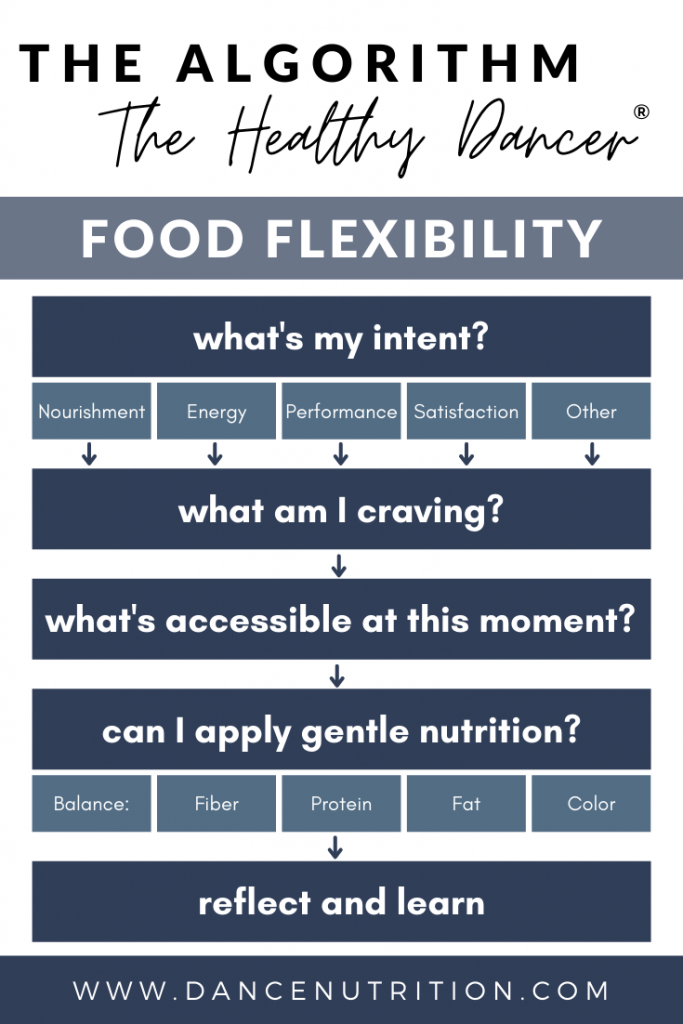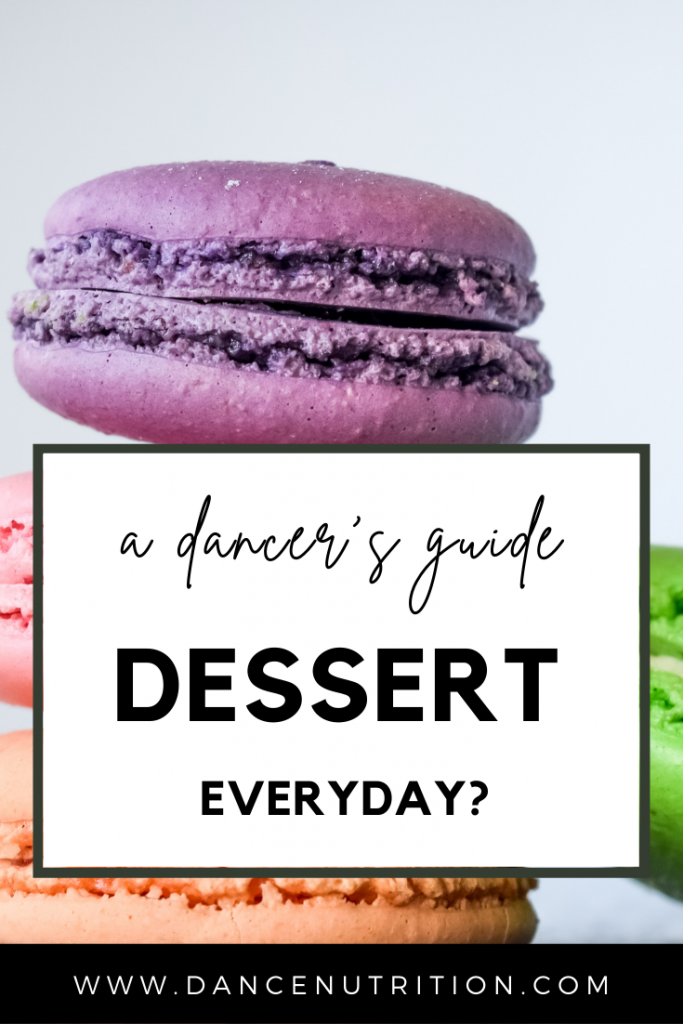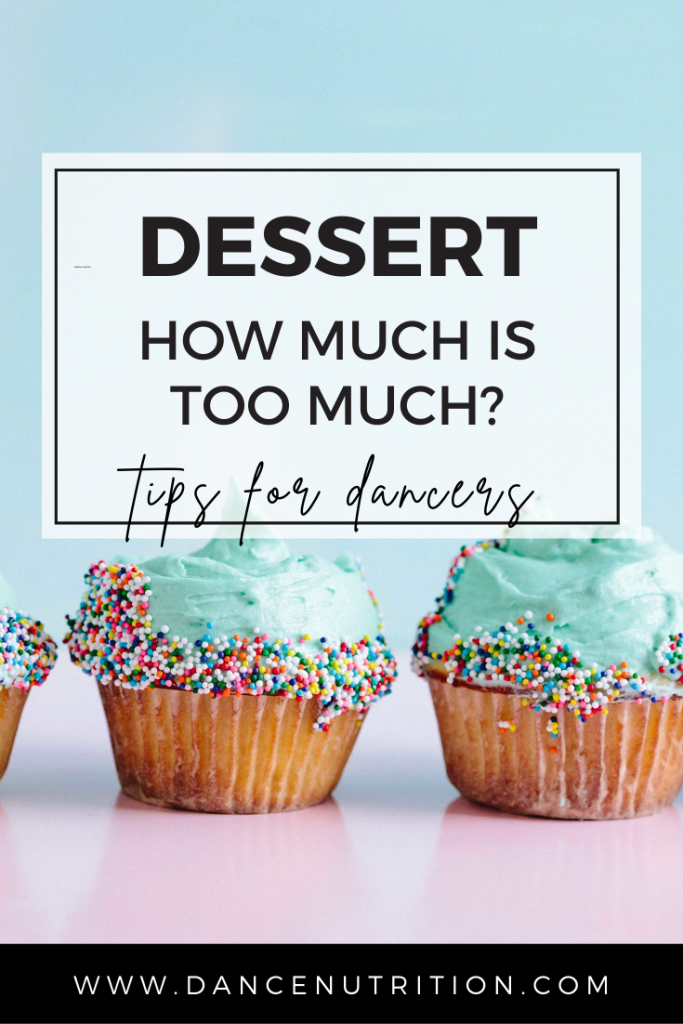Many dancers question whether dessert can truly have a place in their daily lives. Can it be part of a balanced, performance-supportive lifestyle? How much is “too much,” and is dessert inherently “bad”?
These are valid questions that deserve thoughtful, compassionate answers. This article will help you navigate dessert decisions and offer a powerful mindset shift, so you can build a relationship with sweet treats that supports you both on and off stage.
Can Dancers Eat Dessert Every Day?
In short, yes, you can. But the answer is nuanced, especially when we consider how food impacts not just physical health but emotional well-being and mindset.
I’ve previously written about the difference between food choices and food rules (read more here). Strict food rules, especially those that dictate when or how often you “should” eat dessert, can quickly backfire. When dessert is treated as off-limits or restricted, it often leads to the all-or-nothing trap, the cycle of deprivation followed by overindulgence.
If you’re new to healing from dancer diet culture, this all-or-nothing relationship with food is incredibly common. It takes time, patience, and plenty of self-compassion to figure out what amounts of previously “off-limits” foods feel both enjoyable and supportive.
I can confidently tell you, both as a dancer and as a dietitian, I eat dessert every day. And I do so in a way that feels good: I’m satisfied, I’m energized, and I don’t feel physically uncomfortable or mentally stressed about it. But this balance didn’t happen overnight. It was the result of curiosity, mindful experimentation, and trust-building with my body.
Ask yourself:
- How would it feel to eat all the dessert, all the time?
- Would that experience feel satisfying, or would it leave you physically uncomfortable?
- How can I enjoy dessert in a way that supports me?
You have unconditional permission to eat dessert anytime it’s accessible to you. The more helpful question is: how can I enjoy dessert in a way that honors my body, my cravings, and my overall well-being?
If dessert currently feels stressful or guilt-inducing, use that as an opportunity to explore. Make space for mindful dessert experiences. Pay attention to the tastes, textures, and feelings that come with each bite. Consider journaling about your experience (here’s how to start). You might be surprised by how this slows you down and helps you reconnect with your body’s natural cues. This proactive approach will help you through the logistics of healing your relationship with sweet treats.
Should I “Healthify” My Dessert?
The short answer: you don’t need to. You’re allowed to enjoy dessert in its traditional form— sugar, butter, chocolate, and all— without sabotaging your health or your performance.
You don’t need to sneak vegetables into brownies or swap ingredients in the name of eating “clean.” That said, if you genuinely enjoy those variations. Diet culture doesn’t own the rights to these healthy options and if you enjoy them, they’re completely valid for you to include! Sneaking avocado into your brownies boosts its omega-3 content. There’s nothing wrong with that!
The key is intent. It’s about giving yourself full permission to enjoy both nutrient-dense desserts and less nutrient-focused sweet treats. But here’s the important distinction:
- Does my choice feel satisfying? (Learn why satisfaction matters here)
- Do I feel anxious if the “healthier” version isn’t available?
If the answer to the second question is yes, you may still be stuck in diet culture’s grip, and it’s worth exploring your beliefs and food rules around sugar and dessert.
The Healthy Dancer® Food Flexibility Algorithm: Navigate Dessert without Guilt
Within The Healthy Dancer® Framework, food flexibility and gentle nutrition work together to help you navigate choices around all foods, including sweet treats. Let’s walk through the algorithm.

Step 1: What’s My Intent?
Start with your why. Diet culture often pushes us to choose foods with the sole intent of controlling body size. Instead, can your intent around dessert be rooted in pleasure, enjoyment, and self-care?
This doesn’t mean you need to reject diet culture for the sake of rebellion. If your only reason for eating dessert is to prove something, you might find yourself stuck in “entitlement eating”— when choices are reactionary rather than supportive.
Your reasons should be internally driven:
- Physically, dessert provides energy.
- Emotionally, it can offer comfort and joy.
- Mentally, it satisfies cravings.
Step 2: What Am I Craving?
Cravings are normal. In fact, they intensify when foods are restricted. Biologically, hormones like neuropeptide-Y and leptin drive cravings for energy-dense foods (often those rich in carbohydrates and fats) when undernourished or deprived.
Ask yourself: What do I really want right now? Is it the crunch of a cookie? The creaminess of ice cream? The richness of chocolate? Honoring your craving is part of feeling satisfied.
Step 3: What’s Accessible To Me?
Sometimes your ideal dessert isn’t available, and that’s okay. Accessibility is a crucial but often overlooked part of healing your relationship with food.
If you’re craving a homemade brownie, but only packaged cookies are available, that option still supports you. Intuitive eating isn’t about perfect choices; it’s about nourishing your body in the context of your life. That might mean prioritizing your body’s need for calories over satisfaction.
Adopting food neutrality, removing moral labels like “good” and “bad,” helps dissolve shame and guilt around more accessible options. Learn more about food neutrality here.
Step 4: Can I Apply Gentle Nutrition?
Is there a way to support my body without sacrificing satisfaction? This returns to that question of whether we need to “healthify” dessert, and the answer depends largely on what satisfies you.
Maybe before a performance, a dense dessert wouldn’t feel good in your stomach, so you opt for a sweet smoothie that still hits the craving but supports your energy needs. Other times, you might want the classic chocolate chunk cookie— the real deal, full-fat, buttery version— and that’s perfect, too.
Gentle nutrition is about options, not restrictions.
Step 5: Reflect and Learn
Not every dessert experience will be perfect. Sometimes you’ll feel fully satisfied. Other times, you may wish you had chosen differently. That’s part of the learning process.
The key is to build self-trust. If your priority is enjoyment, go for the option that genuinely excites you. If your priority is sustained energy, especially around dance classes or performances, a dessert with a bit more protein or staying power will better support you in that moment.
A Personal Note
I avoided dessert for years, terrified that once I allowed myself to enjoy, I’d lose control. Releasing that fear taught me the power of an abundance mindset— when you know dessert is always an option, the urgency around it fades.
Your health, your performance, and your relationship with food are shaped by patterns, not single moments. One dessert, one day, one choice— none of these define your worth or your capability as a dancer.
Key Takeaways: Dancers and Dessert
Dancers can enjoy dessert every day in a way that supports their physical, mental, and emotional well-being. There’s no need to “healthify” dessert— true progress in your relationship with food comes from self-reflection, not from following strict rules. Embracing food flexibility is essential for cultivating a sustainable and joyful lifestyle as a dancer. The Healthy Dancer® Food Flexibility Algorithm can help guide you in exploring your relationship with all foods, including dessert, while continuing to build trust in your body and your choices.




